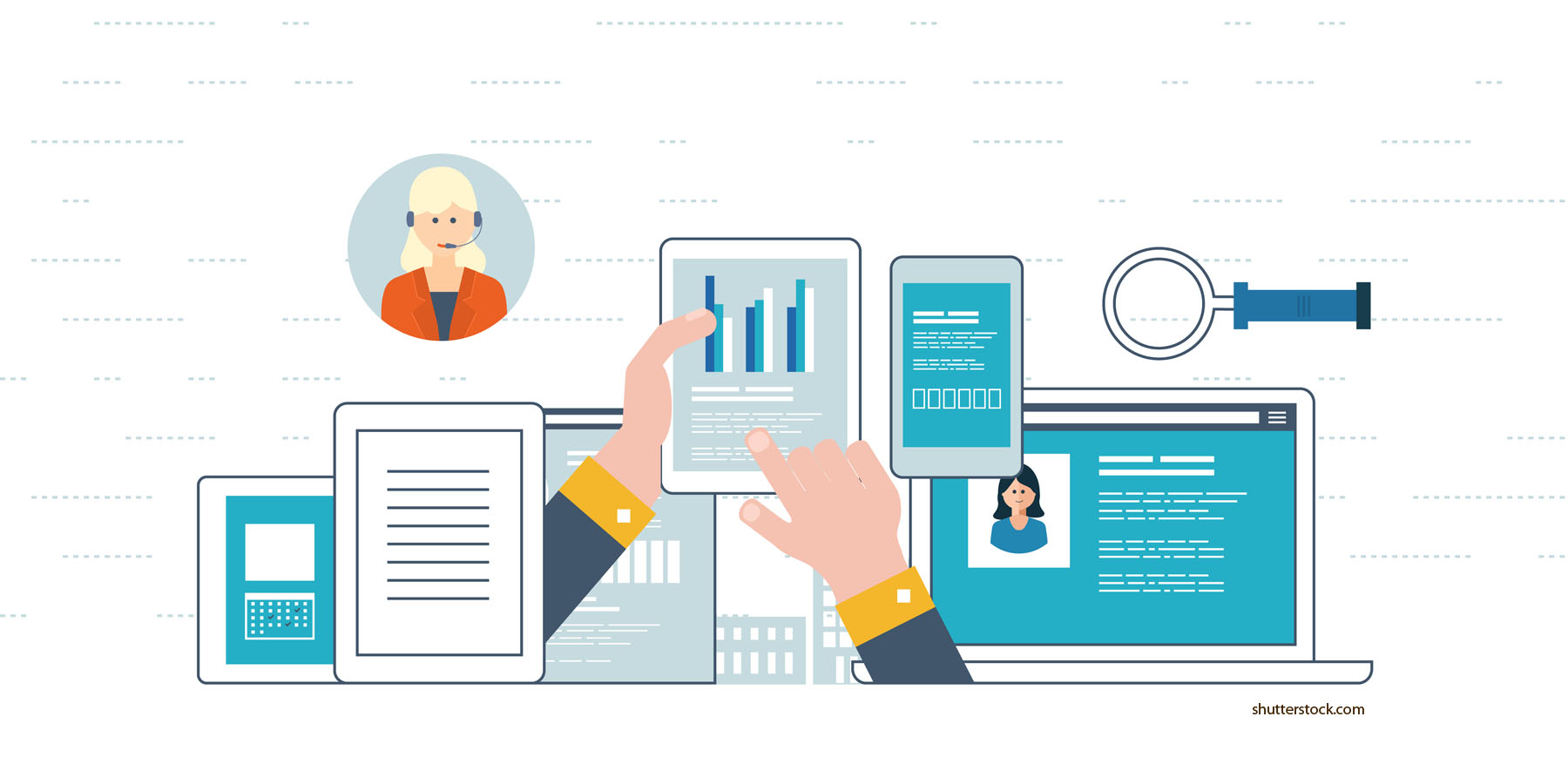Customer journey orchestration may seem like a relatively new concept to pharma marketers, but the idea was actually first introduced in 1999 by IDEO, a design company, as a tool for service design: Journey mapping. At its fundamental level, journey mapping reveals the story of the customer’s experience, charting key interactions they have with a brand. Most importantly, it accounts for motives, emotions, questions, and influences at each of these points.
Using journey maps to gain a deeper understanding of the customer and shape their experience has given most pharma brands a strategic advantage. In fact, research has proven that companies leading the customer experience (CX) charge grow their revenue at a rate 14% faster than those slow to adopt CX.
But the dawn of advanced software tools allows pharma marketers to evolve beyond journey maps, which involve simple segmentation, to fully visualize real-time, individual user journeys and hyper-personalize the customer experience. This new concept is called journey orchestration.
Journey Orchestration: The Impact on Pharma Marketing
What is journey orchestration, how does it differ from journey mapping, and why should pharma marketers care about it?
It’s no secret that marketing has grown infinitely more complex. In the past, we could launch a patient campaign, get prospects into the proverbial funnel, nurture them through program registration, and move on to the next campaign.
The game has changed. Marketers are now on the hook for working hand-in-hand with brand, medical, regulatory, agency, and other teams to not only ensure a positive digital health experience but also accelerate sales velocity. In fact, Salesforce’s 2017 State of Marketing report found that 67% of all marketing leaders say that “creating a connected customer journey across all touchpoints and channels is critical to the success of the overall marketing strategy.”
Unlike traditional customer journey mapping, which is limited by a theoretical visualization of the customer experience across siloed, channel-specific technology and high-level audience segments, journey orchestration enables marketers to automate customized, omnichannel interactions with buyers and collect data in real time to progressively build user profiles. Think of it as creating an individualized journey map for each and every customer and prospect, then using machine learning to understand and automate the critical pivots you need to make—on the fly—to keep them engaged.
When properly implemented, journey orchestration allows you to:
- Get laser-sharp on ROI: Using machine-based learning that leverages real-time metrics, journey orchestration protects your marketing budget by enabling you to prioritize your efforts based on best fit and intent instead of wasting money on low-converting tactics.
- Personalize messaging: With the right technology platform in place, your team is able to create one-to-one, high-impact and high-value outreach campaigns based on prescriber, patient, and other audience. This ensures you deliver the right message at the right time, and provide deep value to keep them engaged.
- Improve attribution metrics: You’ll gain a better understanding of what tactics are working, and why, by accessing amplified data that allows you to pivot before a prospect disengages.
According to McKinsey, organizations that take advantage of consumers’ behavioral insights outperform their competitors in sales growth by 85%, and in gross margin by 25%. Targeted messaging and real-time data are key to understanding customer interactions before it’s too late.
Getting Started with Journey Orchestration
Getting journey orchestration off the ground can be a heavy lift for even the most agile teams, not to mention sizeable pharma organizations with numerous stakeholders involved. It’s an investment of time, money, and resources, but one that can deliver tremendous returns. Luckily, you don’t have to go from zero to 60 overnight to get started. There are a few steps you can take today to set the foundation for a strong journey orchestration program:
- Identify objectives: What outcomes would make this investment worth your team’s time? A better understanding of your users, increased pipeline, improved attribution, alignment across various departments (digital, email, brand), increased drug sales, or patient adherence? With so many possible benefits, it’s critical to define your KPIs.
- Align resources and key stakeholders: Based on the identified objectives, what resources will you need to execute? Will this require buy-in from other stakeholders (such as the sales or regulatory team)? Will you need any new tech tools or is your existing tech stack enough? Do you need a strategic or implementation agency partner to navigate the process? It’s crucial to consider these issues before you hit the ground running.
- Plan a pilot: Instead of immediately jumpstarting the process across your entire CX, pilot journey orchestration in one area that will potentially deliver the highest impact. “Focus on a single audience with a well-defined success metric,” says David Aponovich, Senior Director, Product Marketing at Acquia. “Choose two or three channels that have effectively worked together within your organization in the past, such as email and social retargeting, and ideally those that have a common success metric so you have a clear benchmark.”
Starting One Step at a Time with a Pilot Program
Piloting your journey orchestration efforts is at the crux of getting the process off the ground successfully without becoming overwhelmed. Before tackling a larger initiative, focus on one or two business use cases as a proof of concept. This could include better segmenting healthcare providers based on the type of messaging they’re engaging with (such as efficacy, safety, and reimbursement), expanding patient relationships, or integrating a new platform to increase omnichannel visibility.
“Starting with a pilot allows organizations to more quickly understand how to use the tool to support journey orchestration, the level of effort necessary for content and system integration, and the possible organizational change that will be needed to roll out a full journey orchestration program,” Aponovich says. “A successful pilot can also provide the data necessary to achieve organizational buy-in for a larger initiative.”
What Does a Pilot Program Look Like?
Let’s dive into an example. Email is still one of the most effective ways to market in the pharma space. But due to siloed reporting, email marketing initiatives can be difficult to map to sales engagement. You might be able to benchmark the open rate or click-through rate, but is your team using that data to inform the next sales touchpoint?
In a pilot journey orchestration project for email marketing, you could uplevel the customer experience and deepen engagement. For instance, prior to sending out the next email campaign, map out specific journey triggers and “plays”—what should happen next after a particular link is clicked or piece of content is engaged with. This should be a concerted effort between marketing, sales, and customer success.
If a healthcare provider (HCP) opens one of your marketing emails, it could trigger an automated event to call their record from your CRM and alert the territory sales rep that the prospect engaged with an email. A personalized email from the rep with additional educational materials or an appointment request would be triggered. If the HCP clicks to visit the drug website, a customized homepage could be served that prominently displays information relevant to prescribing HCPs.
The goal is a more personalized, high-value experience for the user. Messaging can be personalized to help them solve a problem, answer a question, or provide a richer digital experience.
Test, Revise, Repeat
Journey orchestration is not one-and-done; it is an ongoing process you will iterate on as you go. And to do that, it’s imperative to consistently capture data and feedback, and take action on it. Starting out small will enable you to build as you go without taking on too much risk. That said, there are some common pitfalls to avoid:
- Poor success metrics: Journey orchestration is a whole new approach, and the success metrics you’ve previously used may not apply. Since journey orchestration is about tracking data across every touchpoint in support of a high-level objective, isolated KPIs such as click-through rate or site conversion may no longer be the best barometer for success. Instead, you might consider engagement data, pipeline velocity, and customer lifetime value.
- Partners that over-promise: A quality technological partner or strategic consultant will be realistic with you about the time and monetary investment required to integrate journey orchestration technologies and roll-out programs. Be wary of vendors that promise overnight success in exchange for a huge up-front investment.
- Insufficient planning: When it comes to journey orchestration, your tactical game is just as important as your strategic one. Mapping and streamlining detailed processes and procedures, assigning ownership of key responsibilities, and tracking challenges and opportunities are key markers of a maturing process.
- Data compromise: Journey orchestration platforms are powerful tools that allow you to consolidate data from multiple sources. Work closely with technology and compliance teams to ensure that all data is collected, stored, and mapped according to the highest privacy and regulatory standards.
For pharma marketers, the brave new world of journey orchestration can both vastly improve the customer experience and provide a wealth of data. Admittedly, embarking on a mass overhaul of your processes might prove taxing for your team. The good news? There are plenty of avenues for you to build success in this arena by sticking to best practices, qualified partners, and incremental steps.






